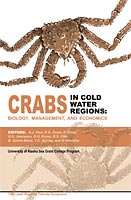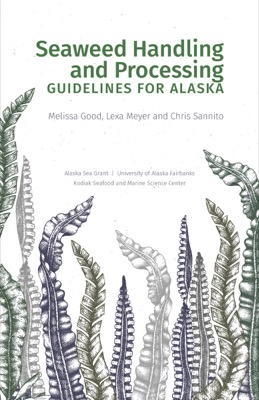
Effects of windchill on the snow crab (Chionoecetes opilio)
J.J. Warrenchuk and T.C. Shirley
- Price: $0.50 Sale: $0.00
 This is part of Crabs in Cold Water Regions: Biology, Management, and Economics
This is part of Crabs in Cold Water Regions: Biology, Management, and Economics| Format | Price | |
|---|---|---|
| PDF download [291.5 KB] Bypass cart and download |
Free | Add to Cart |
Description
Tens of millions of snow crabs, Chionoecetes opilio (Fabricius), are sorted and discarded each year during the Alaskan snow crab fishery. The fishery occurs during winter in the Bering Sea and there is a high probability that discarded crabs will be exposed to cold air temperatures and high winds (windchill) during the sorting process. A laboratory experiment was conducted to measure responses of snow crab to a range of air temperatures and wind speed to assess the effects of windchill. Male snow crabs of sizes typically discarded during the fishery were collected from the Bering Sea. A wind tunnel in a walk-in freezer simulated the windy and cold conditions on the deck of a Bering Sea crab boat. Crabs were exposed to wind speeds from 8 to 16 m per second and air temperatures from –2ºC to–10ºC for 5 minutes. Mortality, reduced activity in the form of a righting response, and limb loss were assessed before, immediately after, 1 day,and 7 days post-treatment. Snow crabs experienced 40-100% mortality at windchill values from –10ºC to –16ºC. Limb loss was variable, but pronounced at windchill values below –10ºC. Righting response was impaired after all but the least severe treatment. Reduced exposure time significantly reduced mortality.
Item details
- Item number: AK-SG-02-01i
- Year: 2002
- DOI: https://doi.org/10.4027/ccwrbme.2002.09



